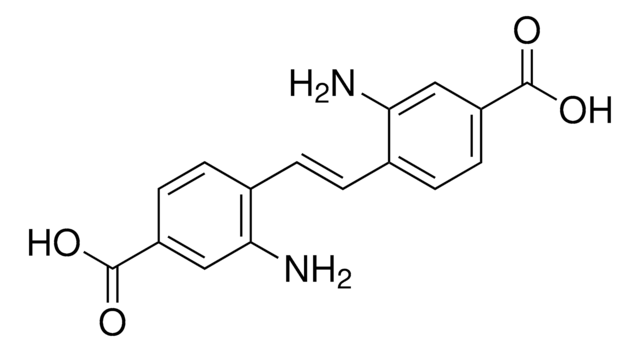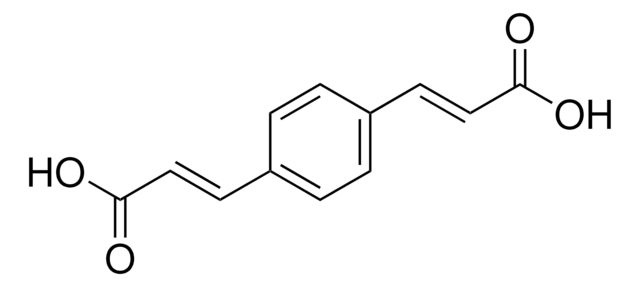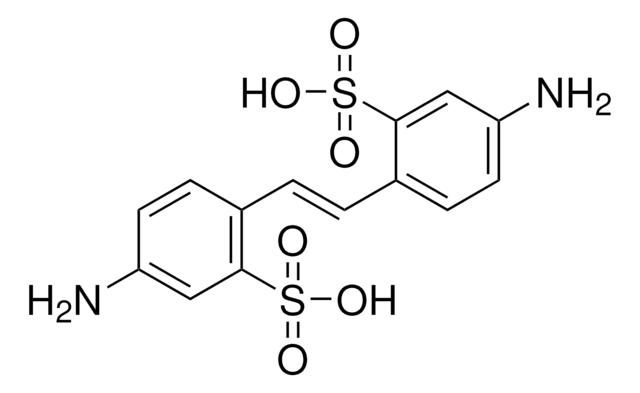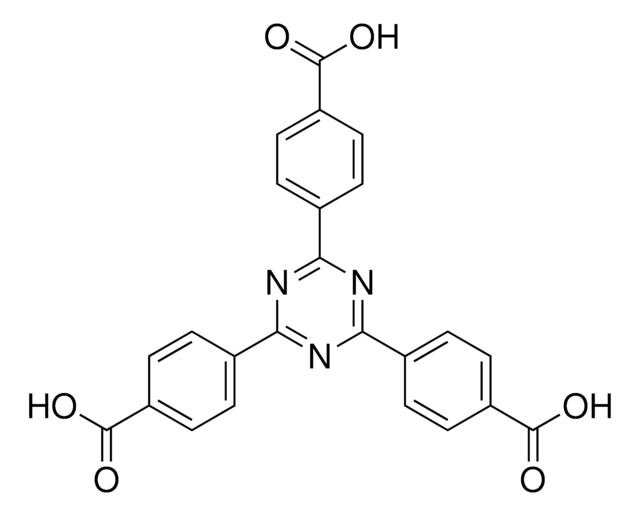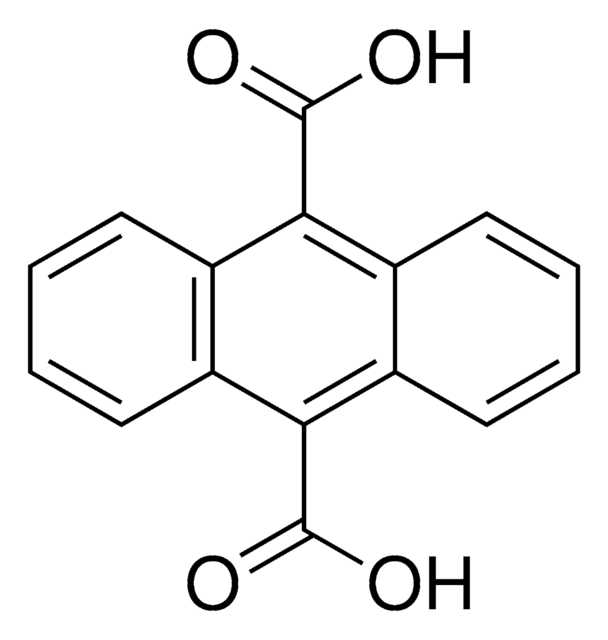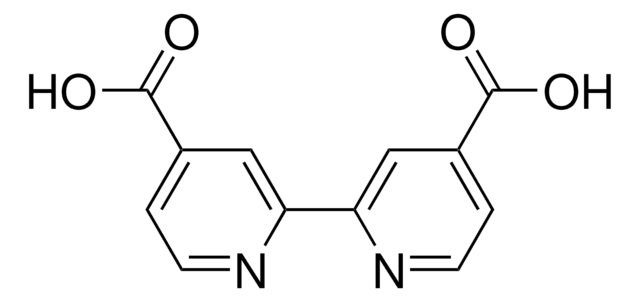759597
4,4′-Stilbenedicarboxylic acid
98%
Sinónimos:
4,4′-(1,2-Ethenediyl)bisbenzoic acid, 4,4′-Dicarboxystilbene, Biphenylethene-4,4·-dicarboxylic acid, H2BPEA, H2SDC
About This Item
Productos recomendados
Nivel de calidad
Ensayo
98%
Formulario
powder
características de los productos alternativos más sostenibles
Design for Energy Efficiency
Learn more about the Principles of Green Chemistry.
sustainability
Greener Alternative Product
mp
400-420 °C
categoría alternativa más sostenible
, Enabling
cadena SMILES
OC(=O)c1ccc(\C=C\c2ccc(cc2)C(O)=O)cc1
InChI
1S/C16H12O4/c17-15(18)13-7-3-11(4-8-13)1-2-12-5-9-14(10-6-12)16(19)20/h1-10H,(H,17,18)(H,19,20)/b2-1+
Clave InChI
SBBQDUFLZGOASY-OWOJBTEDSA-N
Categorías relacionadas
Descripción general
Aplicación
Palabra de señalización
Warning
Frases de peligro
Consejos de prudencia
Clasificaciones de peligro
Acute Tox. 4 Oral - Eye Irrit. 2 - Skin Irrit. 2 - STOT SE 3
Órganos de actuación
Respiratory system
Código de clase de almacenamiento
11 - Combustible Solids
Clase de riesgo para el agua (WGK)
WGK 3
Punto de inflamabilidad (°F)
Not applicable
Punto de inflamabilidad (°C)
Not applicable
Elija entre una de las versiones más recientes:
Certificados de análisis (COA)
¿No ve la versión correcta?
Si necesita una versión concreta, puede buscar un certificado específico por el número de lote.
¿Ya tiene este producto?
Encuentre la documentación para los productos que ha comprado recientemente en la Biblioteca de documentos.
Los clientes también vieron
Nuestro equipo de científicos tiene experiencia en todas las áreas de investigación: Ciencias de la vida, Ciencia de los materiales, Síntesis química, Cromatografía, Analítica y muchas otras.
Póngase en contacto con el Servicio técnico
